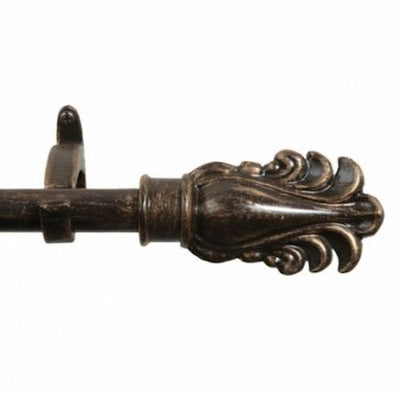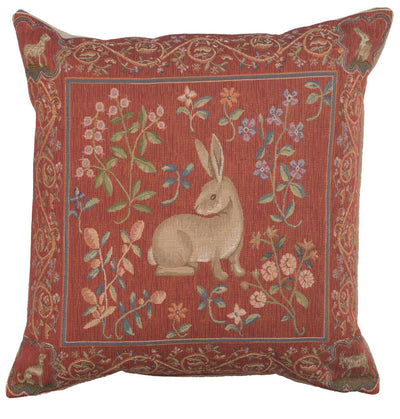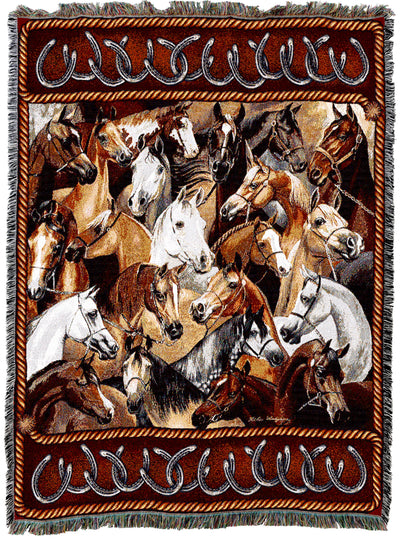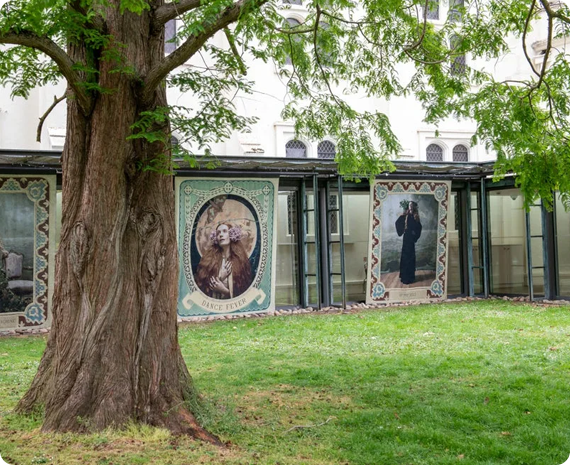Timeless Threads: The Unicorn Tapestries and Their Contemporary Reimagining
The Unicorn Tapestries were large tapestries woven around the 15th century in the Southern Netherlands. They depict a symbolic narrative centered around the hunt, death, and resurrection of a unicorn. They are interpreted as a representation of Christological allegory and Neoplatonism.
This blog explores the historical background of these wall art tapestries and how these continue inspiring modern artists and designers, proving they are as relevant today as they were centuries ago.
The Origin of Unicorn Tapestries
The Unicorn Tapestries consist of seven panels, each depicting a different stage in the unicorn hunt. Although the tapestries were not originally titled, they were given descriptive titles to describe the panels' contents.
Each panel measures approximately 12 feet tall by 14 feet wide and was crafted between 1495 and 1505. Among the series, The Hunt of the Unicorn is the most famous work. Here, we talk about the entire series with emphasis on The Hunt of the Unicorn.
Symbolism in Thread: Meaning Behind the Imagery
Religious, allegorical, and courtly interpretations
-
The Unicorn-Christ’s purity, divinity, and sacrificial role.
-
The Virgin Maiden- Virgin Mary, central to the Incarnation allegory
-
The Hunt- Christ's suffering and crucifixion
-
The Enclosure (in "The Unicorn in Captivity")- Christ in the tomb
-
Tree of Life Motif- Cross from Christ’s crucifixion
-
The Capture- Incarnation of Christ
Botanical and animal symbolism
Plant symbolism
-
Pomegranate tree- fertility and resurrection
-
Oak Tree- Strength and Nobility
-
Holly- Christ’s passion and protection
-
Rose- the Virgin Mary
Animal Symbolism
-
Hounds - Instruments of Christ’s Passion
-
Stag - the longing for god
-
Pheasant - Luxury, pride, or vanity
Medieval Craftsmanship and Technique
Canvas for the Scene
A wool warp was used to create the structure of the tapestry. It was preferred because of durability and dye absorption. Silk highlighted details and adds vibrance to the scene. Gold and silver gilt were used for noble imagery such as crowns and jewellery. The weave density was exceptionally high, with some panels exceeding 10 warps per centimeter to replicate delicate paintings.
Sewing in the Story
-
Loom type:
A high-warp (haute-lisse) loom was suitable, and a vertical frame was favored in Paris and Brussels.
-
Weaving process:
The elements were woven from the back with a reversed design during the process. Stencils were placed behind the weaver for guidance. Artisans used the “weft-face weave” technique to cover the wrap completely in weft for an opaque background.
-
Coloring and detail work process
A technique known as “hatching” was used to create shade and depth by using different-colored threads in a small area for a three-dimensional effect. Outlining of shade was done with dark-colored threads for sharpness and definition.
The Artistic Process
-
Atmospheric compression- This technique is used in textile artwork to focus on the symbolic meaning of a scene. It is the intentional flattening of the spatial depth where elements are layered or stacked without realism.
-
The use of Millefleurs - The backgrounds are densely filled with flowers, herbs, and grasses that appear individually on the solid-colored backdrop, displaying excellent botanical accuracy. This richly decorative style is a defining characteristic of the series.
From Castle Walls to Museum Halls: Journey Of the Unicorn Tapestry
From Medieval Courts to The Cloisters
The Hunt of the Unicorn was woven in renowned tapestry centres of Brussels and Liège in the Southern Netherlands, known for luxury textiles, earning the patronage of high-ranking royals and officials. They were crafted during the European transition to the Northern Renaissance, reflecting the cultural and economic rise of the Burgundian Netherlands. Although there are speculations about the real patronage of the artwork, the identity remains uncertain.
The letters “AE” woven on the cloth hint at the initials of a patron. Some scholars connect the tapestries to the La Rochefoucauld family in France, although no concrete evidence confirms this.
Historians have also suggested Jean de Berry, Duke of Berry, as a possible patron due to stylistic similarities with other works he commissioned. By the 17th century, the tapestries were recorded at Château de Verteuil
Restoration History and Current Home
Later, the Unicorn Tapestries were rediscovered in the mid-19th century at the Château de Boussac in central France, where they had suffered from centuries of neglect, exposure, and partial damage. They were purchased by American financier and philanthropist John D. Rockefeller Jr in 1922. Rockefeller funded their careful restoration, which involved cleaning, stabilizing damaged fibers, and remounting them for safe display.
In 1938, he donated the series to the newly established Met Cloisters, a branch of the Metropolitan Museum of Art in New York City dedicated to medieval art and architecture.
Cultural stewardship and ongoing conservation
The Met Cloisters has the cultural stewardship of the Unicorn Tapestries. Preservation involves regular condition assessments, fiber analysis, and environmental monitoring to prevent damage from light and humidity. Advanced imaging techniques, such as infrared reflectography and digital microscopy, aid conservators in detecting early signs of stress within the weave structure.
Reweaving the Myth: Contemporary Reimaginings
Modern Textile Artists Inspired by the Tapestries
Artists such as Kiki Smith have explored themes of myth, the feminine, and nature, influenced by the allegorical richness of the Unicorn panels. William Kentridge has collaborated with textile workshops to produce narrative wall tapestry hangings that recall the storytelling tradition embodied in the Unicorn series. Additionally, modern weaving collectives like Aubusson’s Cité Internationale de la Tapisserie in France have taken inspiration from medieval techniques.
Digital fashion adaptation
In multimedia art, creators like Tabaimo and teamLab were inspired by tapestries’ aesthetic and narrative structure to build animated environments copying medieval iconography with motion and sound. In fashion, designer Alexander McQueen, in his Fall/Winter 2016 collection, has incorporated Unicorn Tapestry motifs into textiles and embroidery, using historical references. Christian Dior designed the Millefiori Unicorn Motif, inspired by the Unicorn Tapestries.
Conclusion
The quintessential beauty of The Unicorn Tapestries inspires artists and admirers even today. Have you ever dreamed of bringing that same elegance into your space? Quality Tapestry can help. We offer stunning tapestry reproductions and even custom designs tailored to your unique vision. Whether you're drawn to classic medieval charm or want something personal and fresh, we’re here to turn your ideas into woven masterpieces. Let's create something magical together!














